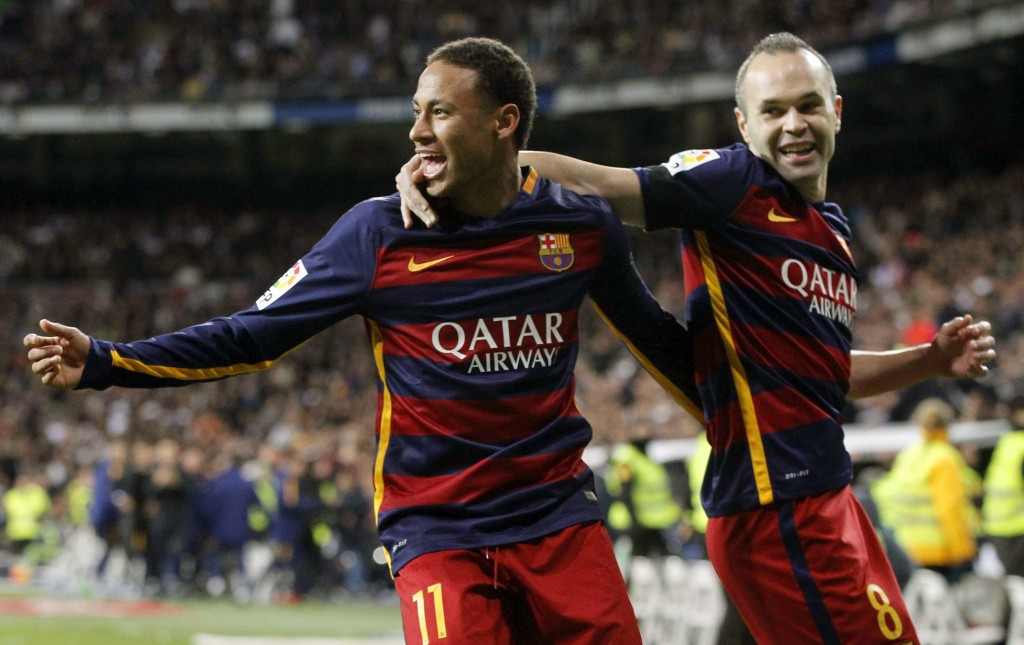This article attempts to tactically analyze the performance of Real Madrid and Barcelona in the Clasico last Saturday and determine the key zones on the football field where the match was won and lost.
The pre-match was pretty focused on Messia s return from injury and whether Barcelona could afford to rest him having a three point lead at the top.
.
Messi, eventually, made the team after spending couple of months on the sidelines albeit from the bench. Rakitic, an injury doubt before the match, passed a late fitness test to earn a starting berth for the Catalans. Barcelona lined up in a traditional 4-3-3 with Rakitic, Iniesta and Busquets in the three midfield positions. Real opted to go full throttle with James supporting the BBC and a double pivot of Kroos and Modric. In the end, it was the midfield which eventually decided the outcome of the match.
First Half
Barcelona are a team who possess one of the best midfields in the world with arguably the best midfielder in the world – Andres Iniesta. To setup up with one man less in central midfield and go for an almost 4-2-4 was naivity beyond imagination from such a tactically astute manager as Rafa Benitez. With Ronaldo, Bale, Rodriguez and Benzema, you have four bystanders who are not known to tracking back or closing down opponents and Barcelonaa s midfield superiority in both numbers and quality showed in the eventual outcome of the match. Kroos and Modric ran around in circles as Iniesta, Busquets and Rakitic ran ragged.
Busquets completed 36 of 40 attempted passes, Iniesta completed an astonishing 43 out of 46 passes and Rakitic 39 out of 41. Thats 118 passes out 127 attempted with a pass completion rate of almost 93% and this is in the first half alone. Bale who was playing as the No. 10 for Real Madrid failed to make a single tackle in the first half and made a total of one in the whole match. With Rodriguez, Ronaldo and Bale failing to do the required defensive work, Alba and Alves bombarded down the wings doubling up on Madrida s wing backs. With Sergi Roberto not being a natural winger meant that most of the attack was focused on the left. With no help from James Rodriguez in doing his defensive duties, Danilo struggled to contain Neymar and Alba. Alba being left alone for the whole match completed the most passes for Barcelona with a success rate of 88% including an assist.
Second half
Everybody expected Real Madrid to revert to a 4-3-3 in the second to add some steel in midfield. Instead Rafa took out Rodriguez for Isco — a like for like switch in the right side of midfield, with Bale continuing in the No.10 position. Barcelona, who were 3-0 up by this point with Iniesta and Neymar exposing Reala s left side with a goal and assist each, responded by bringing on Messi for Rakitic. Sergi Roberto returned to his preferred central midfield position.
Messi, instead of going to take his position on the right, was advised to stay in the centre and take advantage of Madrida s void in central midfield. Barcelona’s midfield superiority became even more apparent in the 4th goal when Messi and Alves exchanged passes before the Argentine put in a delightful ball for Alba, whose first touch put Suarez through on goal. He wasn’t going to miss from there.
Summary
Iniesta finished the match with a staggering 95.6% (66/69) pass completion rate and was subbed off to a standing ovation by the Bernabeu faithful. But more than Iniesta’s masterclass in midfield, Rafa Benitez’s tactical ineptitude proved to be Real Madrid’s real undoing. The Clasico showed us how a team full of superstars can be torn apart if not backed up by a sound tactical approach.
This is a guest post written exclusively for TheHardTackle by Aamer Aslam.
